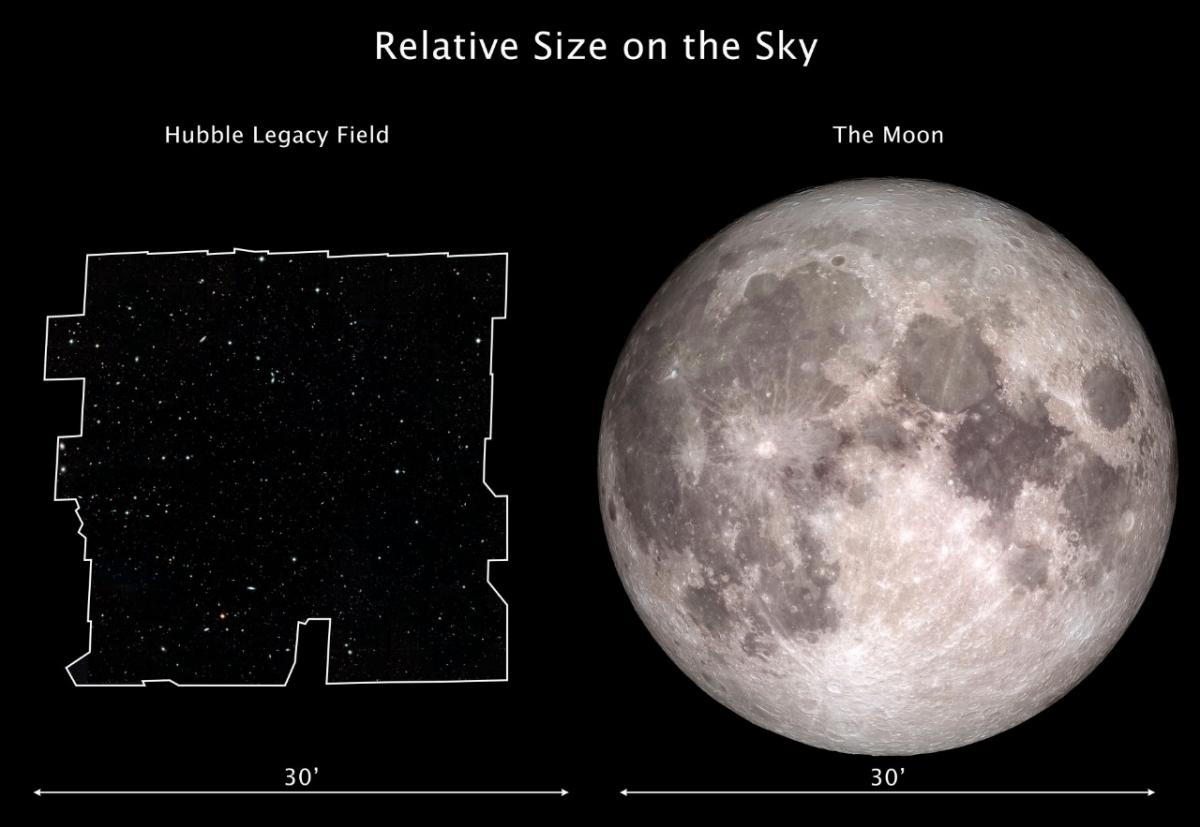Astronomers have compiled 16 years of photos from the Hubble Space Telescope into a single image.
It covers only a tiny speck of the sky - about the same size as the moon - but contains 265,000 galaxies dating back 13.3 billion years.
"Now that we have gone wider than in previous surveys, we are harvesting many more distant galaxies in the largest such dataset ever produced by Hubble," said the University of California's Garth Illingworth, who led the team that compiled the image.
The Hubble Legacy Field, as it's been dubbed, encompasses 7500 photos taken by Hubble, which launched in 1990.
It's by far the biggest single image of the universe ever created, containing 30 times more galaxies than the previous record-holder - 2012's eXtreme Deep Field.
But even though it contains more galaxies than there are people in Hamilton, it only covers an area of the sky the same size as the moon. An animation of the image put together by NASA really shows how vast the universe really is.

Some of the galaxies in the image are just one 10-billionth the brightness of what the human eye can see. Hubble also uncovered what astronomers have dubbed "a zoo of unusual objects" and "galactic train wrecks".

They all exist in a region of the sky that appears otherwise empty to the human eye - but there's better to come.
"This will really set the stage for NASA's planned Wide Field Infrared Survey Telescope (WFIRST)," said Illingworth.
"The Legacy Field is a pathfinder for WFIRST, which will capture an image that is 100 times larger than a typical Hubble photo. In just three weeks' worth of observations by WFIRST, astronomers will be able to assemble a field that is much deeper and more than twice as large as the Hubble Legacy Field."
- Jupiter's striking aurora captured by Hubble
- Universe first: Telescope captures black hole letting out burps
- Hubble's replacement James Webb finally complete
WFIRST isn't expected to launch until the mid-2020s. Before then Hubble's replacement, the James Webb Space Telescope, will be put into orbit.
"No image will surpass this one until future space telescopes are launched," the team said in a statement.
"The expectation is that this survey will lead to an even more coherent, in-depth and greater understanding of the universe's evolution in the coming years," added Illingworth.
It's estimated, based on Hubble's observations, there are between 100 billion and 200 billion galaxies in the universe.
Newshub.
